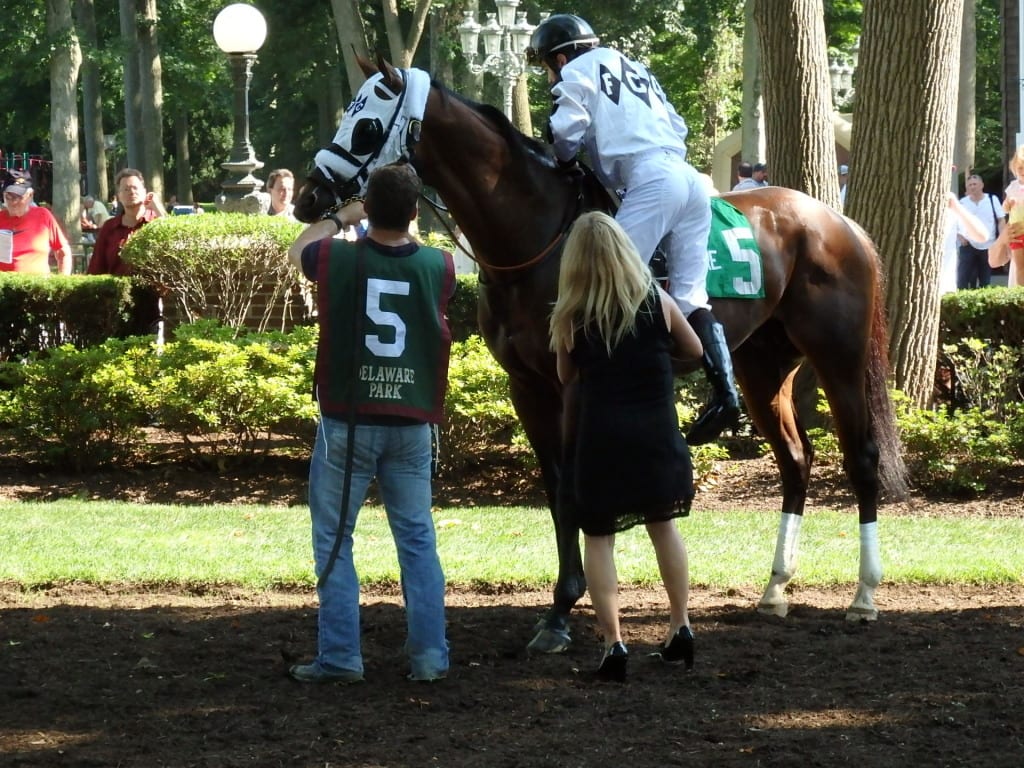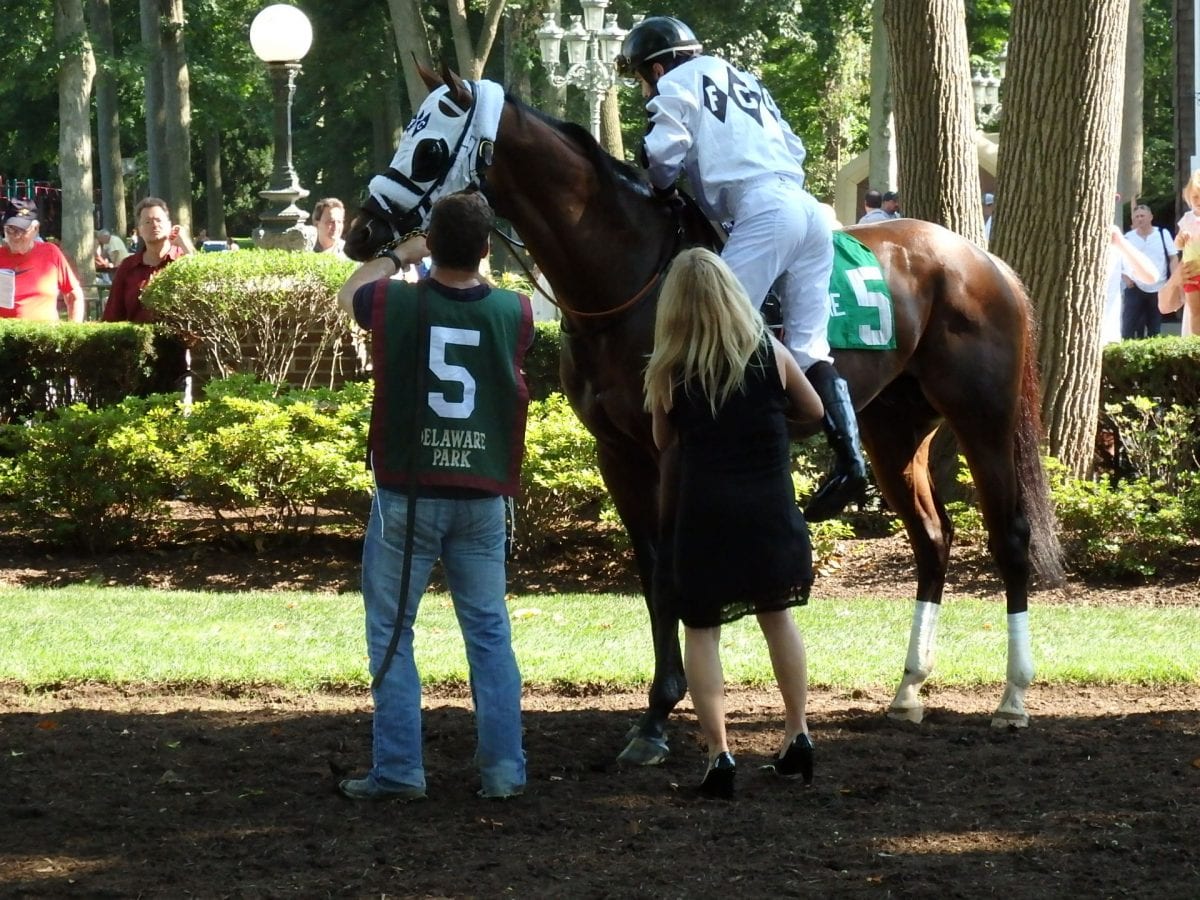
Kathy Ritvo gives son Michael a leg up on Fast Anna at Delaware Park. Photo by The Racing Biz.
by Doug McCoy
Training and stabling horses is a year-round occupation in this day and age. Over the years the sport has evolved from one where wealthy owners and farms raced six or seven months of the year before turning their runners out to a business where most stables race 12 months a year.
Maintaining a racing stable year-round poses a number of challenges for trainers and owners and the question of where a stable will house their runners during periods when tracks aren’t racing is one of the main problems trainers face. In states and areas where racing is conducted most of the year stables have the security of having their runners housed at tracks that are open for stabling and training on a year-round basis.
But in other areas, Delaware among them, the problem of where to stable one’s horses during the months when there is no live racing on-track is a serious one. The number of farms and available training facilities in the area are limited and their costs per stall to house runners during the fall and winter are often more than many horsemen and their owners can afford. The Delaware Thoroughbred Horsemen’s Association and Delaware Park have an agreement permitting horses to stable and train on the grounds at Delaware Park from March through December.
However, per the agreement, in order to keep the track open for stabling and training during the months of January and February, there needs to be a financial commitment to occupy a minimum of 300 stalls at a cost of $10 per day per stall. That would generate the $90,000 per month that is needed by the track to pay for costs involved in keeping the backstretch open and functional and the main dirt and training tracks open for training. The horsemen are required to submit stall applications for the January-February period along with payment for the stalls by November 10th, and DTHA president Mike Gorham said horsemen need to be pro-active in the coming days so the DTHA can get a clear picture of the commitment for those months.
“We’ve received stall applications from a number of outfits but I think some of those apps were just estimations on the number of horses involved. What we need is firm numbers and payment of the stall fees for that first month so we can assured of being able to go to track management with those funds,” Gorham said. “Time is getting short for us to firm up our commitments. For a number of stables this is a crucial period. Alternative stall space is limited in this area, and the cost of private facilities is usually higher than what it will cost to stay at Delaware Park. I think being able to stay at one track with your horses and your help is critical to many outfits, and keeping our horses here during the down time is a plus for the racing program when we go back to racing in the spring.”
Bessie Gruwell, the executive director of the DTHA, echoes Gorham’s comments about the urgent need for horsemen to contact the organization as soon as possible about their stabling plans.
“We were pleased to be able to work out an agreement with Delaware Park that would enable owners and trainers to be able to stable at Delaware Park through the winter without the need to move their horses. Now we need our horsemen to get in touch with us as soon as possible with their application for stalls and payment for the month of January. Right now we have applications for 295 horse,s but there are always last minute changes so we need to have a firm idea of our numbers prior to the November 10 deadline. Horseman need to contact the DTHA office at 302-994-2521 extension 7284 about their intentions. We’re hopeful this will allow the track to remain open for stabling and training without interruption through the winter and keep our horsemen from being forced to find alternative stabling arrangements during a tough time of year.”














Many will vehemently disagree with what I’m about to say… I’m not so sure horse racing should be a full-time, year-round occupation or industry. I don’t know what the right answer is, but I’m sure running many of these horses to the bone without a break is not in the best interest of the horses or of the best interest of the profitability of racing as a whole.
Part of the allure of the NFL is that it does not exist year-round. We get to salivate for the months leading up to the season chomping at the bit (pardon the pun) for it to come, and wonder where the season went after it’s over. Yet, the NFL remains profitable. I think horse racing could learn a lesson from the NFL.